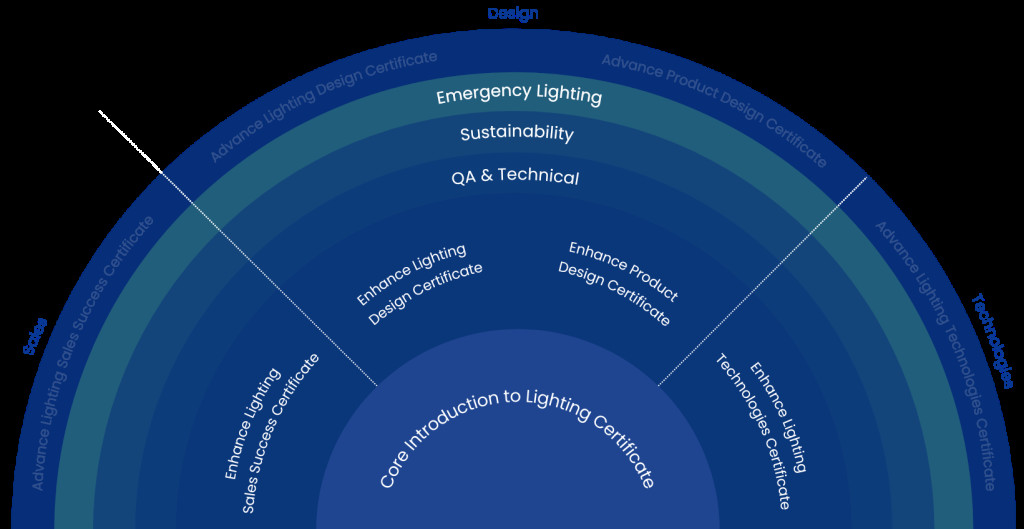Don’t fall short

Teresa Beazley, Commercial & Training Manager at The Lighting Industry Association, explains why technical knowledge isn’t enough when it comes to addressing the skills shortage in lighting.
The UK lighting industry is at a crossroads. As regulation tightens, digitalisation accelerates and sustainability becomes mandated, demand for skilled people has never been higher, and yet, across the sector, one theme dominates: a shortage of skills.
Much of the conversation focuses on technical expertise; controls, compliance, product design, emergency lighting. All critical. But to treat the challenge as purely technical is to miss the point. Skills don’t exist in a vacuum. They succeed or fail depending on the culture and leadership around them.
Beyond the technical gap
An organisation may hire brilliant engineers, but without leaders who can coach, listen and inspire, that brilliance risks going untapped. Often, technical know-how gets stuck in silos, while the next generation struggles to find mentors who give them confidence to contribute.
A Gen Z and Millennials Survey from Deloitte (2023) showed ‘67% of employees have left or considered leaving a job due to poor management and toxic culture’. When applied to lighting, a sector already competing with tech and renewables for young talent, the risk is stark: we may lose skilled people not because they lack interest in lighting, but because leadership doesn’t give them a reason to stay.
The workforce challenge is compounded by demographics, with a third of the UK workforce set to be Gen Z by 2030, the industry cannot rely on outdated career structures. Younger professionals expect clarity, coaching and cultures where they feel heard. If lighting can’t provide that, they will look elsewhere.
The competencies we need now
So what does effective leadership in this context look like? Alongside hard skills, we must embed:
• Self-awareness: leaders who understand their own impact and adapt to different contexts.
• Emotional intelligence: the ability to recognise and respond to colleagues’ and clients’ needs.
• A coaching mindset: moving away from command-and-control to guiding and developing others.
• Strategic thinking: anticipating how regulation, digitalisation and demographics reshape the market.
• Resilience: staying adaptive under pressure and helping teams do the same.

These used to be ‘nice to haves’, but they are fast becoming the multipliers of success. A technically skilled team led by someone with emotional intelligence and resilience will deliver better outcomes than one with technical brilliance but poor leadership.
How trade associations can help
Unlike individual business, trade associations see the whole supply chain, and that perspective is powerful. It means they can benchmark capability, identify common gaps and create shared solutions.
At The Lighting Industry Association (The LIA), this has led to the creation of a Profession Map, a sector-wide framework that identifies the competencies needed across four domains: Sales, Design, Technologies, and Emergency. Crucially, it blends technical knowledge with leadership behaviours, offering a clearer view of ‘what good looks like’ at every stage of a career.
From this, tailored learning pathways are emerging, programmes that combine technical modules with leadership development. Whether it’s a sales professional learning how to influence ethically, or a design engineer building confidence to lead cross-functional teams, the goal is the same: to produce well rounded professionals who can both do the work and drive change.
Associations also offer something individual businesses cannot, neutrality and scale. Training developed through a trade body is not about serving one company’s culture, but about setting a baseline across the entire sector. It builds trust. It also helps smaller businesses, those without large L&D budgets, access the same structured development as the biggest players.
Why this matters now
The industry’s role in Net Zero, building safety and occupant wellbeing, cannot be overstated. Without a skilled and motivated workforce, progress will stall. Technical training alone won’t secure that future, embedding leadership behaviours alongside technical skills will. And the benefit is mutual. Organisations that invest in this dual approach not only strengthen their pipeline of talent but also create the kind of inclusive, innovative cultures that retain people for the long-term. In a sector where recruitment costs are high and experience is hard to replace, that matters.
The 55:25:20 model of learning offers one practical route forward. Balancing self-paced knowledge development (55%), social learning (25%) and experiential practice (20%), businesses can ensure skills are embedded, shared and sustained.
A collective responsibility
Addressing the skills shortage is not a challenge that manufacturers or consultants can solve alone. It demands collaboration between businesses, educators and associations.
What we need is an ecosystem where technical expertise and leadership behaviours are developed side by side. Get that right, and we won’t just close the skills gap, we’ll unlock the industry’s full potential.







